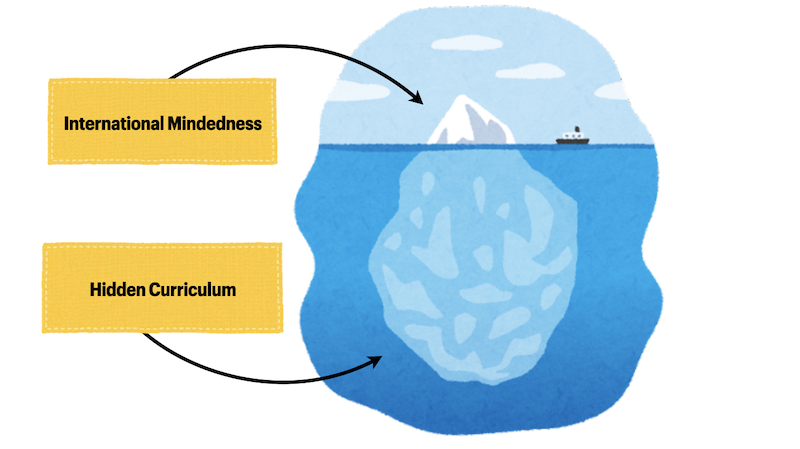Imagine walking into your first day of school. You’re not just learning about history, math, and science, are you? You’re also learning about how to interact with your peers, how to behave in social situations, and even how to navigate the unwritten rules of your school community. This, my friend, is the hidden curriculum at work.

Image: telegra.ph
The hidden curriculum in sociology refers to the unspoken rules, values, and beliefs that students learn within educational institutions beyond the formal curriculum. It’s the subtle but powerful influence that shapes our behavior, attitudes, and understanding of the world around us. It’s a term that unlocks a crucial understanding of who we are and how we navigate life beyond the classroom.
Unveiling the Hidden Layers: Exploring the World Beyond Textbooks
The concept of the hidden curriculum is not new. Its roots lie in the early works of sociologists like Émile Durkheim and Pierre Bourdieu, who recognized the powerful influence of social institutions on individuals. However, in recent years, the concept has gained renewed attention as researchers delve deeper into understanding how this informal learning process shapes our lives.
Imagine a classroom where students are rewarded for answering questions correctly, but penalized for asking for clarification. This subtle message, ingrained through repeated interactions, teaches students to prioritize conformity over critical thinking or seeking help when they need it.
Beyond the Classroom: The Real-World Implications of the Hidden Curriculum
But the hidden curriculum isn’t confined to the four walls of a classroom. It extends into our daily lives, influencing how we interact in various settings. Think about it:
- Workplaces: The unwritten rules of office etiquette, the unspoken expectations of professionalism, and the subtle cues that signal success or failure.
- Family dynamics: The inherited values, beliefs, and norms passed down through generations, shaping our understanding of family roles and responsibilities.
- Social gatherings: The unspoken rules of social interactions, the cues that signal status and belonging, and the subtle power dynamics that play out in social groups.
Navigating the Hidden Curriculum: Understanding its Power
Understanding the hidden curriculum is essential for navigating social interactions effectively. By raising our awareness of these unspoken rules, we unlock a deeper understanding of our own experiences and the experiences of others.

Image: politicalscienceguru.com
Navigating the Hidden Curriculum: Key Takeaways:
- The Power of Observation: Pay close attention to the subtle cues and unspoken rules that govern social interactions. How do people dress? How do they speak? How do they behave in different settings?
- Reflecting on Your Own Experiences: Consider your own experiences within various social institutions. What unspoken rules did you learn? How did these rules affect your behavior?
- Challenging the Status Quo: The hidden curriculum can be a powerful force for change. By questioning the assumptions and biases embedded within it, we can create a more equitable and just society.
The Hidden Curriculum: A Lens for Social Change
The hidden curriculum isn’t just a passive observer; it’s an active participant in shaping social reality. By understanding how it operates, we can create positive change in various aspects of our lives. Imagine classrooms where students are encouraged to think critically, ask questions, and embrace diversity. Imagine workplaces that value collaboration, creativity, and inclusivity. Imagine societies where everyone feels a sense of belonging and equity.
By recognizing and challenging the negative aspects of the hidden curriculum, we can create a more just and equitable society. This starts with understanding the forces at play. It requires recognizing how these unspoken rules influence our behavior and our perceptions of the world.
What Is The Hidden Curriculum Sociology
https://youtube.com/watch?v=JFvJ_MIGHxQ
Moving Forward: Stepping into a More Inclusive Future
The journey of understanding the hidden curriculum is ongoing. By approaching this topic with critical awareness and action, we can work towards a more inclusive and equitable future. As we continue to explore the intricacies of this complex social phenomenon, remember this: the hidden curriculum isn’t just something that happens to us. It’s something we can choose to shape.
Take the next step:
- Share your experiences with the hidden curriculum in your own life.
- Explore resources on sociology and education to deepen your understanding of the topic.
- Actively seek out opportunities to challenge the harmful aspects of the hidden curriculum, working towards a more just and equitable world.






